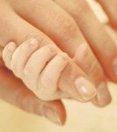Lead
TERATOGENIC: Lead crosses the human placenta (1). Exposure to high environmental levels of lead has been associated with spontaneous abortion, premature rupture of fetal membranes (PROM), and preterm delivery [2,3]. There is also evidence that prenatal lead exposure leads to impaired mental development. [4,5,6]
BREAST FEEDING: The levels of lead in breast milk are similar to those in plasma [7]. Mothers with high serum lead levels should avoid breast feeding.
REFERENCES:
1. Olmeda RE et al. Lead poisoning in late pregnancy due to maternal pica. J Toxicol Clin Toxicol 1999;37:626
2. Wibberely DG, et.al. Lead levels in human placentae from normal and malformed births. J Med Genet 1977;14:339
3. Baghurst PA, et al. Lead in The placenta, membranes, and umbilical cord in relation to pregnancy outcome in a lead-smelter community. Environ Health Perspect 1991;90:315
4. Baghurst PA , et al. Environmental exposure to lead and children's intelligence at the age of seven years. The Port Pirie Cohort Study. N Engl J Med 1992;327:1279
5.Sehn XM et al.Low-level prenatal lead exposure and neurobehavioral development of children in the first year of life: a prospective study in Shanghai.Environ Res 1998 Oct;79(1):1-8
6.Dietrich KN Low-level fetal lead exposure effect on neurobehavioral development in early infancy.Pediatrics 1987;80:721
7. Gulson BL et al. Relationships of lead in breast milk to lead in blood, urine, and diet of the infant and mother. Environ Health Perspect 1998;106:667
ADDITIONAL READING:
Lead Exposure in Pregnancy
Organization of Teratology Information Specialists
SEARCH LITERATURE

